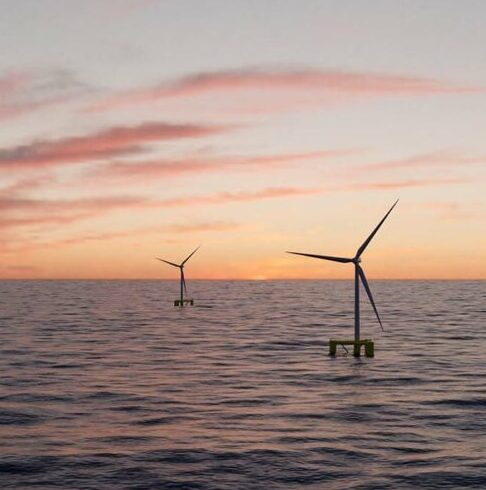
The developer of a proposed $10 billion Victorian offshore wind farm has abandoned the project, prompting fears Australia may not reach its renewable energy targets.
Gippsland Dawn was to be a 2-gigawatt offshore wind farm built between Paradise Beach and Ocean Grange on the Gippsland coast.
The proposal received major project status from the federal government in November, and promised to deliver power to more than one million homes.
But the company behind the project, Blue Float Energy, withdrew from offshore wind internationally after major shareholder Quantum Capital said it was no longer commercially viable to invest in the sector.
The decision also impacts a planned offshore wind farm in the Illawarra region.
The exit comes at a time of volatility in the energy market.
The Victorian government will hold an auction in September to determine which renewable energy projects get built first.
Bruce Mountain, director of Victoria University’s Victoria Energy Policy Centre, said the fact an operator was pulling out without trying to sell their assets was a sign that things were off track.
Bruce Mountain says Australia’s renewable energy targets are now off track. (ABC News: Danielle Bonica)
“It is surprising that [Blue Float] did not manage to find someone else to buy their operations, so that indicates [there is] not a huge amount of interest from others in taking over the options,” Professor Mountain said.
“I think it will impact others … and others that are not in a strong position will be weakened by this.”
Targets off track
The Victorian government has a renewable energy target of 40 per cent this year, increasing to 95 per cent by 2035.
That includes at least 2 gigawatts from offshore wind by 2032.
Nationally, Australia has a target of achieving 82 per cent renewable energy by 2030.
Professor Mountain said there was real doubt over whether those targets would now be achieved.
“We’re not on target in Victoria and we’re not on target nationally at all,” he said.
“Our ministers say we are, but I don’t think that’s right.”
Farmers in the paths of VNI West and the Western Renewables Link protested at Parliament House last week. (Supplied: VFF)
Professor Mountain said significant delays between policy announcements, community consultation and construction meant the current market was no longer commercially appealing for operators.
“There has been a surge in offshore wind development costs globally and those costs have not yet come down,” he said.
“The economics of offshore wind now is much weaker than was thought to be, say three to four years ago.”
Sparking a trade shortage
Electrical Trades Union (ETU) national secretary Michael Wright has called on the government to clear a “bottleneck” of energy project approvals.
Michael Wright says renewable energy project approvals are taking too long. (Credit: Supplied ETU )
“It’s taking way too long to get to a yes or to a no on whether or not a project goes ahead, and that’s a material concern for the country because it’s how we’re going to keep the lights on,” he said.
Jobs and Skills Australia estimates the country will require two million workers in building and engineering trades by 2050, to prepare Australia’s energy grid and industrial base for net zero carbon emissions, including up to 84,000 additional electricians.
“What I have a concern about is, are we going to have an industry that can support training up the thousands or tens of thousands of electrical workers that we need to build this out?” Mr Wright said.
The Clean Energy Generation Report details the number of electricians needed for renewable energy. (Supplied: The Clean Energy Generation Report, Jobs and Skills Australia 2023.)
A spokesperson for the federal Department of Climate Change, Energy, the Environment and Water said it recognised that offshore wind developers were facing global challenges relating to costs and uncertainty, but that a “high level of investment interest” in the Australian industry remained.
The federal government believes it is on track to meet its 2030 emissions reduction target.
A spokesperson from the Victorian Department of Energy, Environment and Climate Action said the Commonwealth had approved offshore wind projects for feasibility licences in Gippsland that could generate 23 gigawatts of electricity — more than enough to meet Victoria’s energy needs.





